TAILORING
All products are sewn by hand. Double layers of fabric ensure stability - in principle, you could store bricks in the fabric shelves. Nevertheless, it can happen that a pocket sits a little skew but ir only makes them unique.
To make sure you get what you want in the end, we will be happy to send you photos of the products we still have in stock by email. Just send us an e-mail .
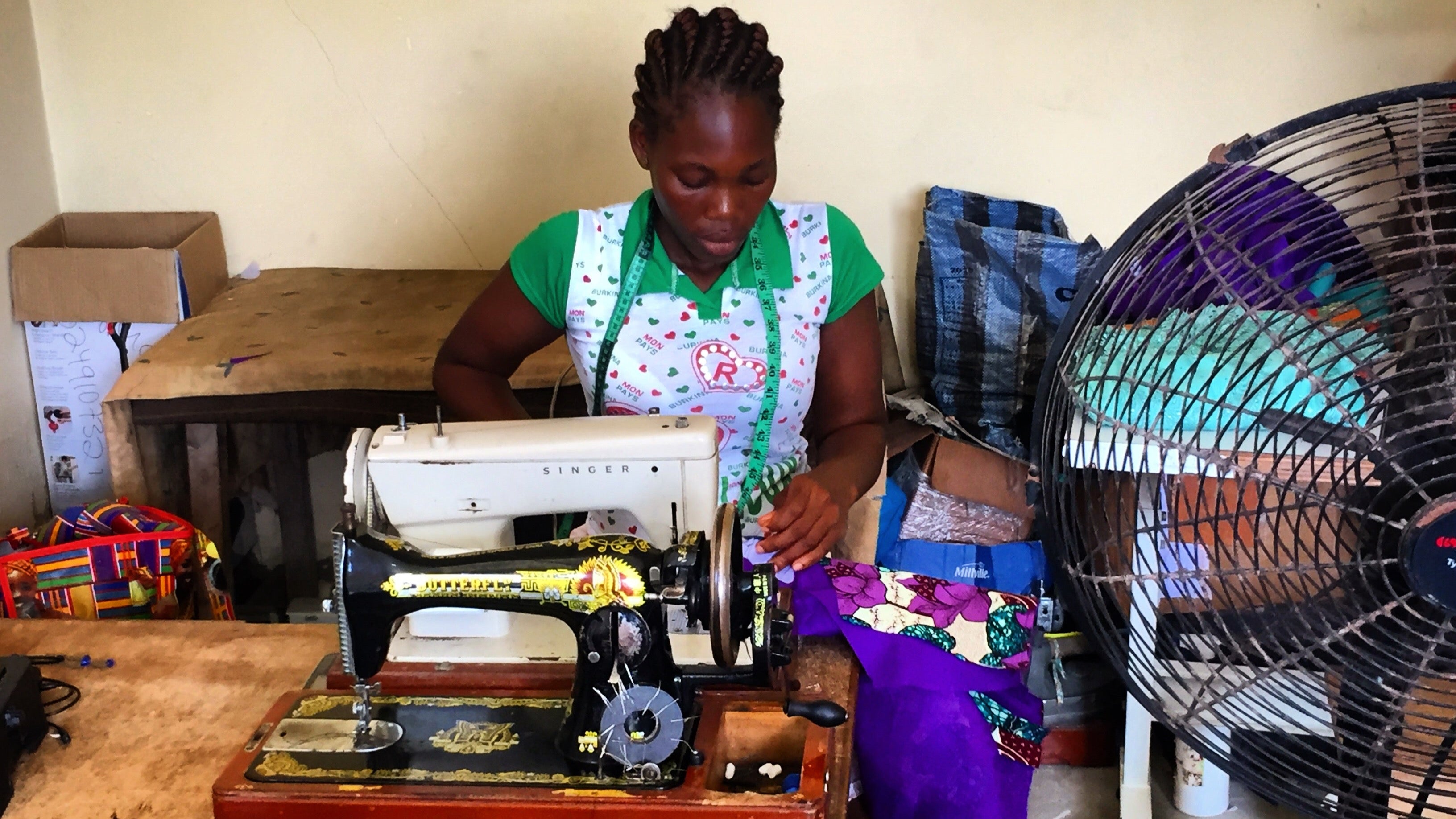
FABRICS
All ƐTↃ products are unique. It starts with the fabrics. We get them in long lengths of fabric. Our fabrics are characterized by their unique patterns. However, as we don't want to thrash meters over meters of fabric to reproduce identical shelves, the patterns vary from product to product. The batik fabrics from Ghana sometimes have irregularities that occur during bleaching. We find this very charming and incorporate these peculiarities into the design.
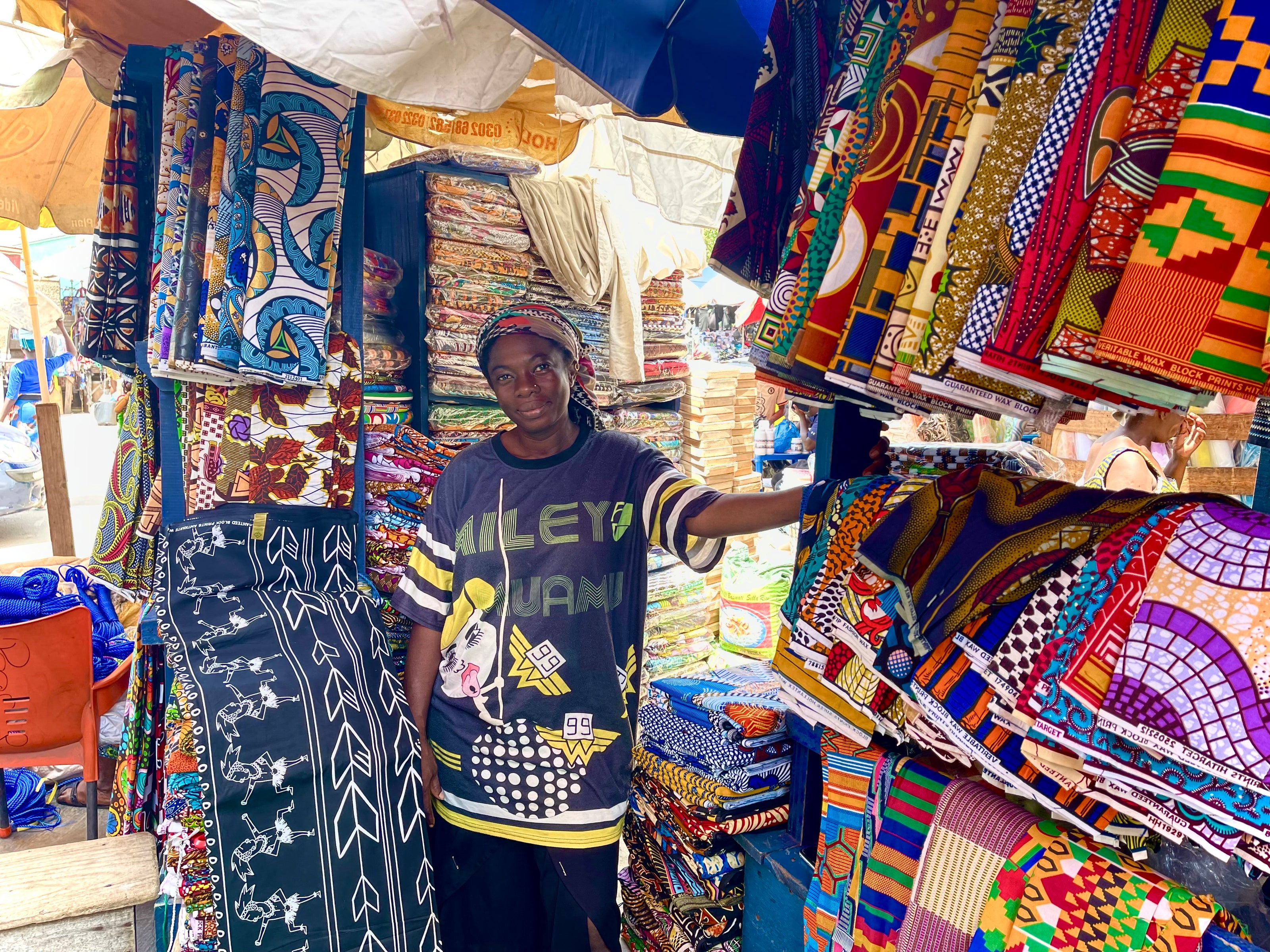
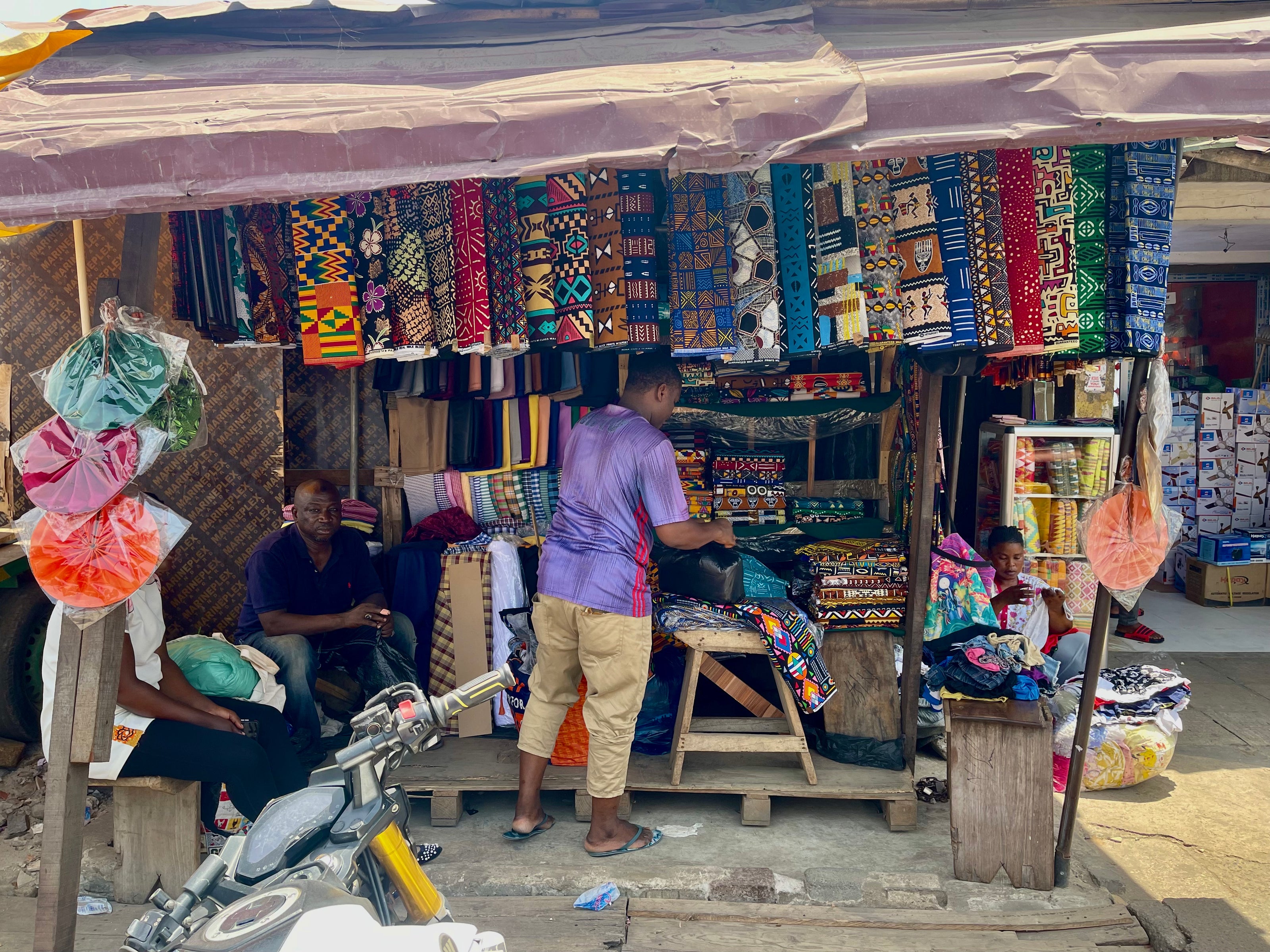
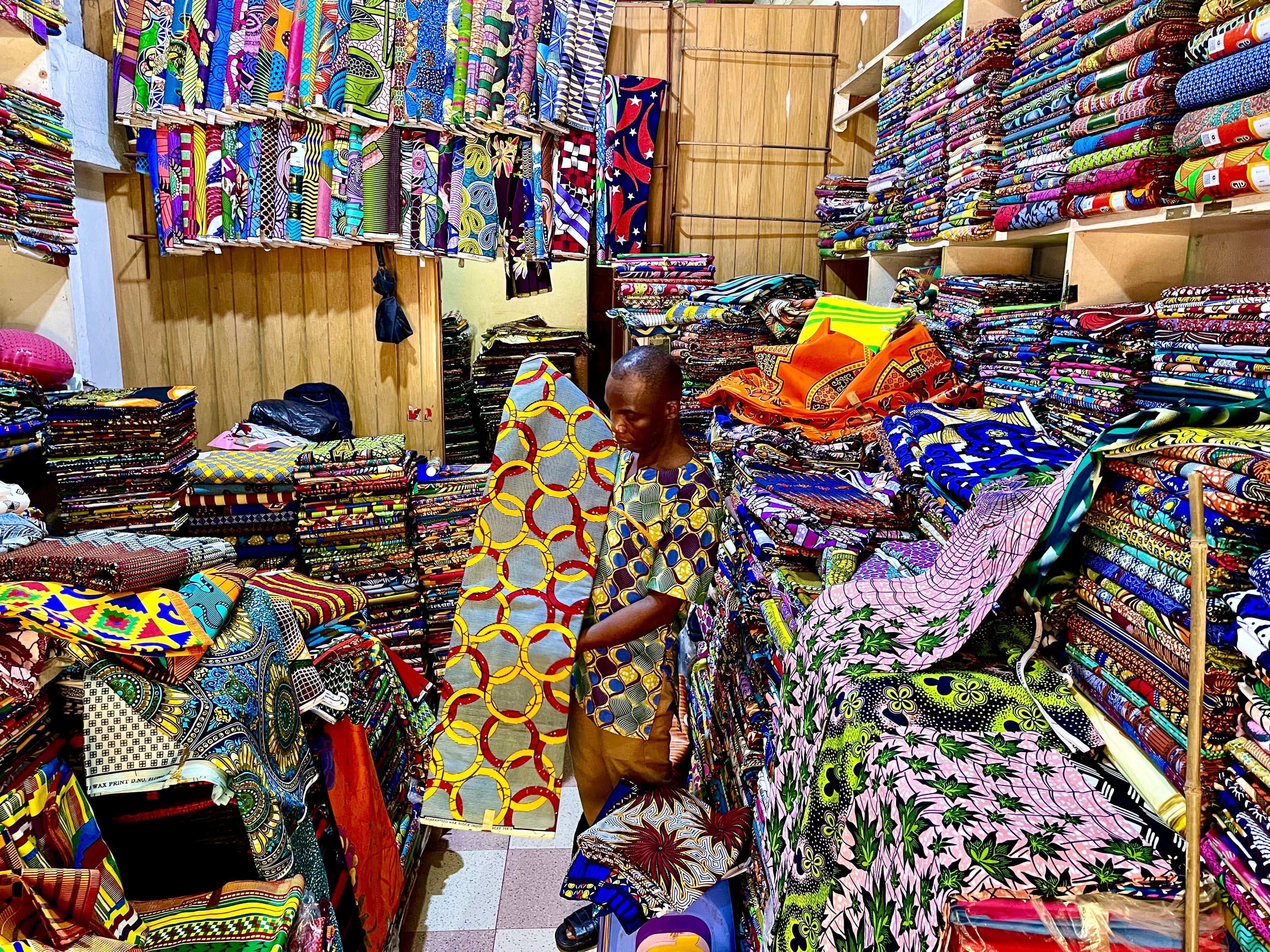
WAX - PRINT & BATIK
We use cotton fabrics for ƐTↃ products. There are two different ways of dyeing the fabrics. On the one hand, there are shelves made from batik fabric, which is dyed and bleached in Ghana. These fabrics are usually two-tone - a bright color and black or white as a “bleach color”. The patterns vary from Ghanaian symbols to complex patterns. On the other hand, there are shelves made from traditional wax fabrics in colorful print patterns. The fabric is somewhat stiffer than the batik fabric. You can still feel the wax layer with a lot of sensitivity. With high-quality wax fabrics, the wax layer is barely noticeable - as is the case with our fabrics.
Over the years, we have built close relationships with some of the small-scale merchants in the huge Makola market in the heart of Accra.
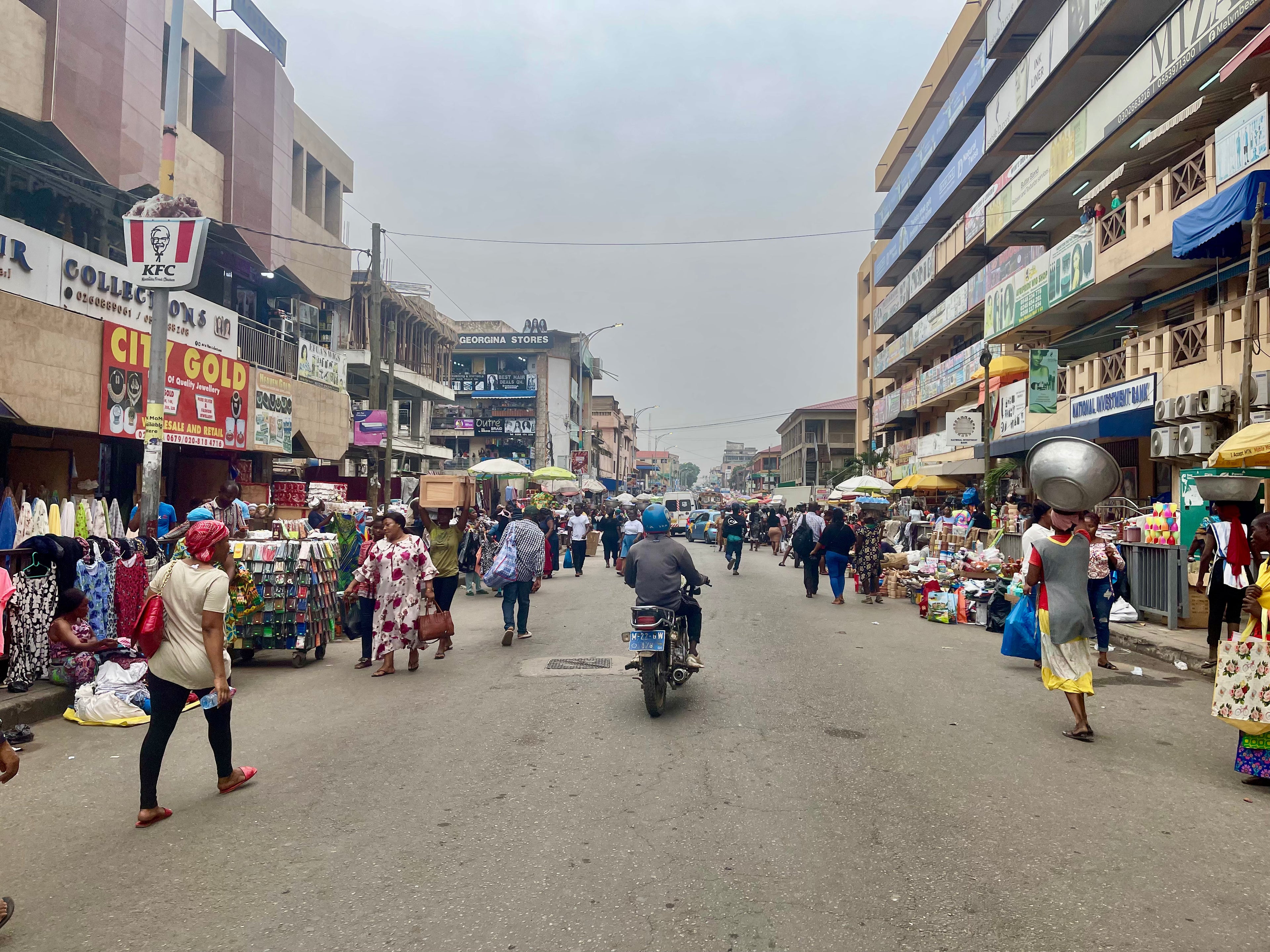
FUGO & KENTE
Kente is the fabric of kings in Ghana. Kente was traditionally worn by both the Ewe and the Ashanti. Hand-woven from cotton, it is both soft and durable. Different patterns represent different meanings - so traditionally, the yellow kente was only to be worn by “normal” people when no royals were around - otherwise, the person had to hurry home and change. Black and white cloth was worn at funerals.
